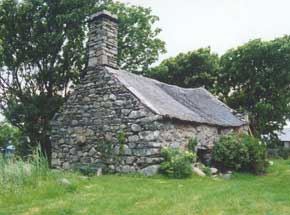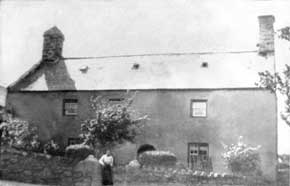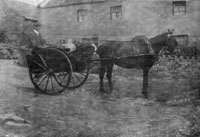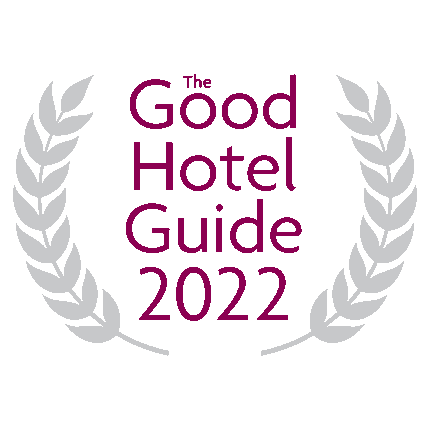

The two oldest buildings are the main farmhouse (Listed Grade II) and a small cottage, possibly a dower house, (Listed Grade II*) or tyddyn y triain, just next to it on the west. These date to around the decades either side of 1600. There was another, rather fine barn on adjacent land, from the same period, but this listed building was unfortunately allowed to be demolished in the early 1990's by the Snowdonia National Park. Other buildings include a shippen, possibly 17th century but with many re-used timbers it is difficult to tell. A barn range, now part of which has been converted for further accommodation, lies just east of the farmhouse and was once a granary (c1800) and a stone hay barn. A small watermill (1883) completes the group. All are Listed for their 'group value'
Historically, the farmhouse and cottage are the most interesting as they are associated with the research I have done on the period 1550 - 1700 in Meirionydd.
Although his family pedigree is recorded back to around 1400, the present farmhouse was probably built by Robert Edwards during the period 1590 - 1610. Robert Edwards was a local official, Clerk of the Peace for Merioneth 1586 - 1594, was recorded as a merchant taking a consignment of goods from the boat Le Angell of Bermo in 1586, and was deputy sheriff of Merioneth in the 1590s. The accusations that he and others abused these positions led to litigation that was heard in the Star Chamber. A number of Crown Letters Patent allowed Robert Edwards and others to lease lands in the parish of Llanaber from the 1580's onwards. These included the 'passage or fferrie of Abermowe' There is a still a small boat ferry to this day in Barmouth (the anglicized form of Abermowe). When you buy your £3 return ticket across the estuary you are carrying on a tradition that is many hundreds of years old!
Robert was praised by a local poet, Sion Phylip, probably in the 1590s for his 'good offices'. He was also praised for his hospitality and good ale! His house was praised for its fine construction, and its description of having 'walls of bi-coloured marble' that acted as a beacon to mariners probably alluded to the whitewash that could have been applied to the house in those times. For almost the next 100 years, his descendents went on to school in Ruthin & Shrewsbury, to university in Cambridge and the Inns of Court in London until the male line expired and Ellis Edwards settled his estate in 1671 on his granddaughter Jane. Llwyndu became a tenant farm and it is mentioned only in successive leases that also included a number of nearby properties.
Llwyndu became part of the Cors y Gedol Estate, owned by the Vaughan family (later Mostyn), in around 1793 but was then sold to the tenants in 1854. During the 19th century Llwyndu provided a number of mariners and one captain during the heyday of the port of Barmouth. As a farm it came to supply Barmouth with much of its dairy produce and after the Lloyd family bought Llwyndu in 1949, a taxi service also operated from here. It passed through a succession of owners until we purchased the buildings and several acres in 1985. This is a brief overview and a longer history is available at the house. for those who wish to read it.
The main house has recently (April 2008) been tree-ring dated to 1581/3 while the secondary house has timbers with a date range of 1514 - 1592/3 leading us to contemplate further the building sequence of these two houses.





